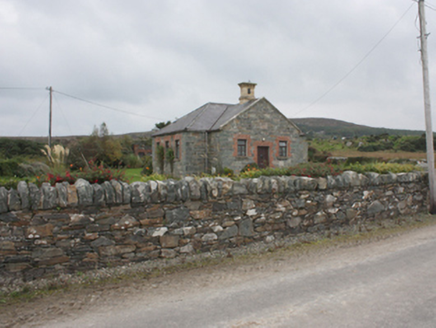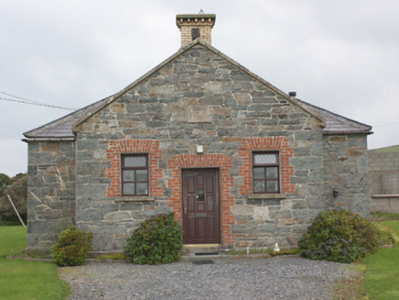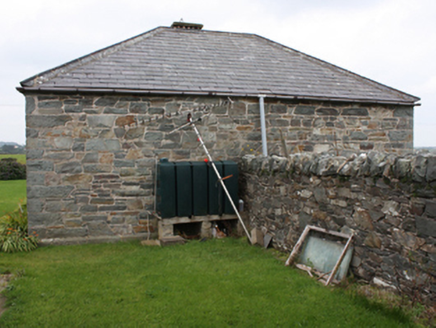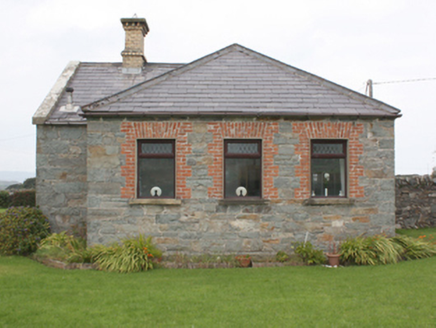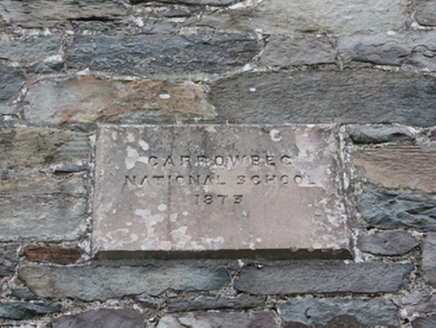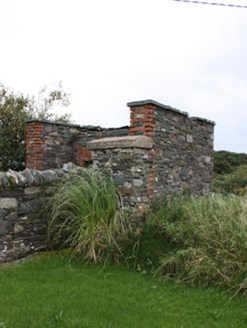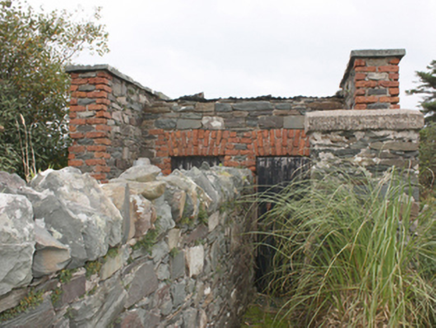Survey Data
Reg No
40901251
Rating
Regional
Categories of Special Interest
Architectural, Social
Original Use
School
In Use As
House
Date
1870 - 1875
Coordinates
259924, 446526
Date Recorded
25/09/2008
Date Updated
--/--/--
Description
Detached three-bay single-storey former national school, dated 1873, on T-plan, with gabled projection to front elevation, now in use as house. Hipped slate roof, pitched to gabled projection with ashlar sandstone gable coping, yellow brick on stretcher bond chimneystack with brick stringcourse and chamfered ashlar coping, replacement rainwater-goods. Roughly squared uncoursed limestone walls with tooled ashlar limestone block-and-start quoins and plinth. Dated sandstone plaque to front reading ‘CARROWBEG NATIONAL SCHOOL 1873’. Square-headed window openings with red brick block-and-start surround and arch, ashlar sandstone sills and uPVC windows. Square-headed door opening with red brick block-and-start surround and arch, rendered patent surround, and replacement timber panelled door and ashlar stone threshold. Set within own grounds with random rubble wall to west and timber gate mounted on random rubble gate piers with rendered coping. Random rubble wall dividing former schoolyard to rear with two-bay single-storey former toilet block comprising of flat corrugated-metal roof, limestone rubble walls with red brick dressings, surmounted by ashlar coping. Square-headed door openings with red brick dressings and battened timber door.
Appraisal
An attractive former national school of unusual design, with a formality quite unlike the standard plan schools of the period, suggesting that it may have been at least part funded by a local landlord. The use of high quality materials and masonry skills demonstrate the investment involved in its construction. The survival of the former toilet block and dividing wall to the rear of the property adds to its significance. Despite the loss of its original fenestration, it retains most of its historic fabric, and importantly its form and proportions and is an important element in the social and educational heritage of the area.
